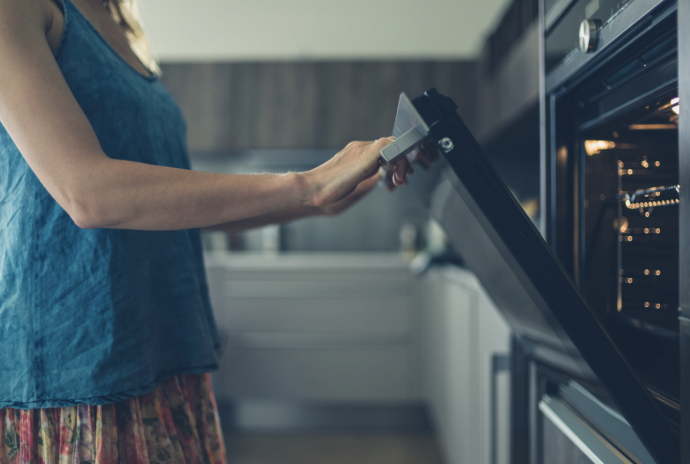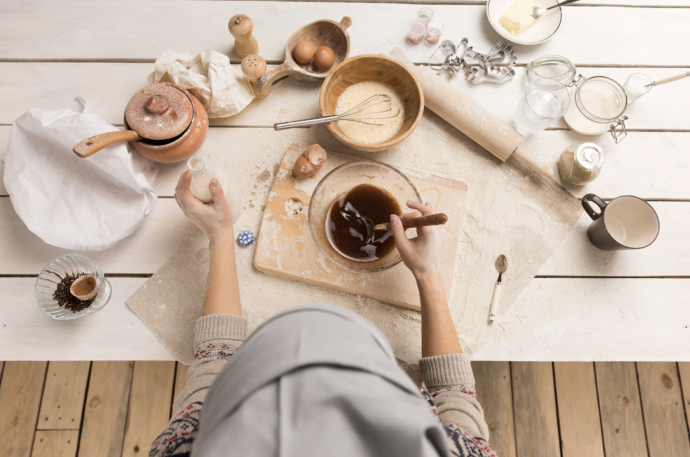They say that baking is when you first glimpse your mortality. By then you have succeeded at everything you have tried - your hollandaise is smooth and velvety, your prime rib effortlessly seared to a perfect medium-rare. You think you are invincible. Then one day you bake a pie and it looks like a spare tire. Or instead of a loaf of bread, you seem to have baked a brick. We have all been there. Fate is cruel, and life is absurd. Figure out what went wrong and get it right next time.
1. Repeatedly open the oven to check the baked goods

It's normal to want to take a peek inside the oven to check your baked masterpiece, but opening the oven door while it's baking can severely affect certain baked goods. Some delicate desserts, like sponge cakes, can collapse in the oven if the temperature is not maintained. The sudden drop in temperature could cause some of your baked goods to sink and ruin the final presentation. Most foods are fine if you check on them in the oven, but try to keep an eye on the recipe you are preparing and do not open the door too often.
2. Dark and light baking pans require different temperatures.

Dark and light colored baking pans are no different than light or dark colored clothes when it's hot outside. The darker color absorbs more heat and warms things up a little faster. Darker pans are generally good for things you want to brown, like roasted vegetables or crispy entrees. However, for delicate baked goods, this can cause the outside to brown or burn. A general rule of thumb is to lower the baking temperature by 25°F when using a dark pan. The darker the pan, the more heat will be absorbed.
3. Eggs and butter are not at room temperature when the recipe calls for it.

There is a reason a recipe calls for eggs and butter to be at room temperature. At room temperature, the butter mixes more quickly with the other ingredients, and the eggs are also easier to whip at room temperature. The result? Creamier and fluffier baked goods. Microwaving the butter at the last minute is also not a good idea, as it will heat from the inside out and result in melted butter that can mess up your recipe. Just let the butter and eggs sit on the counter for 30 minutes to warm up to room temperature.
Short on time?
Eggs - Place your eggs in a bowl of slightly warm (not hot!) water for a few minutes. You can run the water continuously to speed up the process, or let them soak in the bowl for 2-5 minutes or until you feel the chill of the refrigerator is gone. Butter - This is where your microwave comes into play. Cut the butter into several slices, place on a heat proof plate or bowl and set aside. Pour 2 cups of water into a microwave safe bowl or cup. Heat it in the microwave for about 2-3 minutes until it boils, then remove the water from the microwave. Place the butter in the microwave and close the door to trap the hot steam inside. Your butter should be soft in about 10 minutes.
4. Cut into cakes and breads before they are completely cool.

When you cut into a hot baked good, steam is released, which is actually a sign that the good is losing moisture. If you cut into baked goods while they are still hot, the steam will be released all at once, which can cause the baked goods to dry out significantly. Also, your cakes and bread will crack, which will end up with an unsightly presentation.
Sure, it smells delicious, but it pays to be patient and let the goods come to room temperature before slicing.
5. Using wet and dry measuring cups with the wrong ingredients.

Wet and dry measuring cups do not give exactly the same amounts and although the difference is small, it can have a big impact on the outcome of your baking. Dry measuring cups should be used for (you guessed it) dry ingredients like flour or sugar. Wet measuring cups should be used for any liquid ingredients like oil, water, honey or corn syrup.
6. Eggs of different sizes give different results.

Egg sizes can range from medium to large, and these different sizes of eggs can all be quite different. Using the wrong size egg can mess up the ratio of your baked goods, so be sure to follow this step. Most recipes call for large eggs. So if your recipe does not specify the size of eggs to use, it's generally best to use large eggs.
7. Melted chocolate clumps together in a wet bowl.

When melted chocolate comes into contact with water, it clumps together. The result is a lumpy mess that will disappoint those looking for a perfect bowl of smooth chocolate. Make sure your bowl is completely dry before you begin, because even a single drop of water can ruin an entire bowl of melted chocolate. Dry, dry and dry again! Now who gets to lick out the bowl...?
8. Butter and sugar isn't creamed together for enough time

Creaming together butter and sugar is about combining the ingredients, but its also about adding air to the mix, which is a very important step. Some recipes call for over 5 minutes of creaming and a quick mixing won't be enough. A recipe that calls for "light and fluffy" butter and sugar should result in a light color of the two ingredients. That's how you know that air has successfully been incorporated into the blend.










very good news for baking